-
Car Reviews
- All reviews
- Midsize SUVs
- Small cars
- Utes
- Small SUVs
- Large SUVs
- Large cars
- Sports SUVs
- Sports cars
- Vans
Latest reviews
- Car News
-
Car Comparisons
Latest comparisons
- Chasing Deals
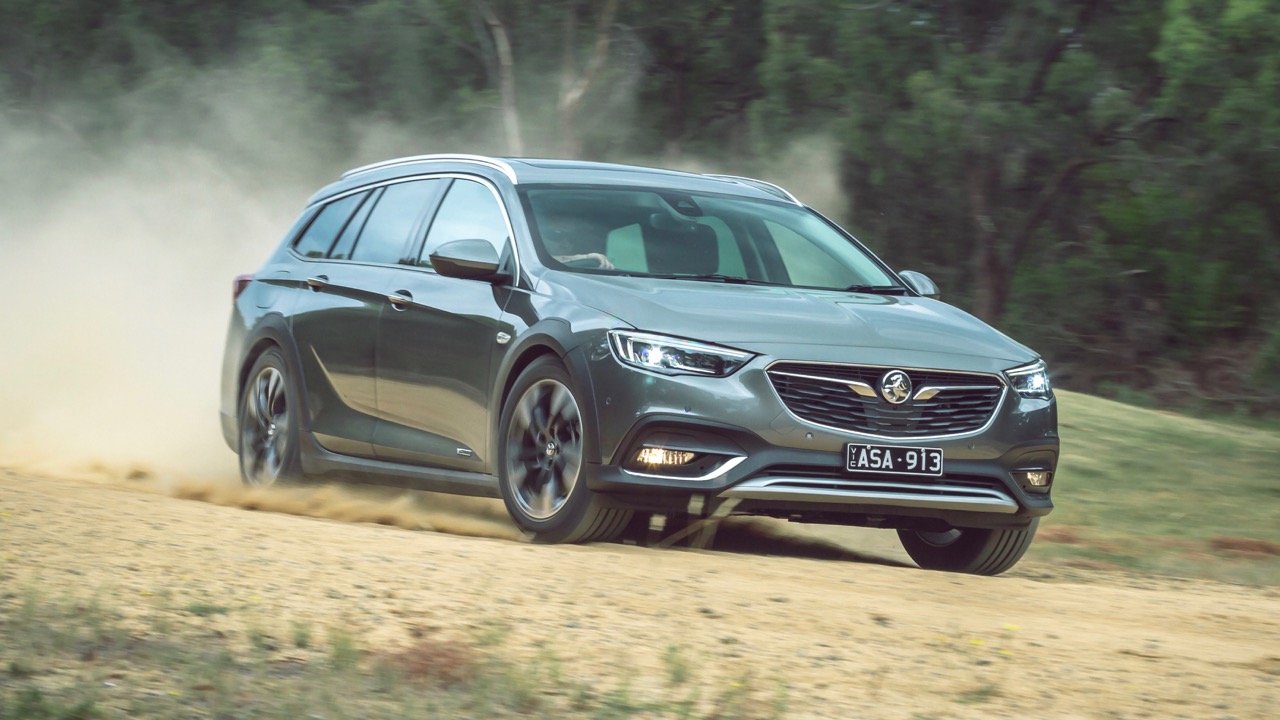
How do you replace a Australian national icon? The answer is that nobody knows for sure, because no company has attempted to offshore a product with as an Australian an identity as the Holden Commodore. A few brands have come close – Bonds controversially sent underwear production packing. But in Commodore’s case, it isn’t just a nationality switch. The car’s entire identity has been altered. For decades, Commodore has meant rear-wheel-drive, plus available V8 engines and manual gearboxes. The last Australian iteration of that recipe, the VF Series II, was in many ways the precise definition of what Commodore naturally means. The incoming 2018 Holden Commodore (ZB) – a German-built, Australian-tuned derivative of the Opel Insignia, is front-wheel-drive. V8 engines, manuals, traditional sedans and utes have all disappeared. Most familiar Commodore grades have gone too: there is no SS; there is, however, a Calais.
Chasing Cars is a video-forward platform, and we launched our review of the 2018 ZB Commodore range over on our YouTube channel first. To say that the reception of our commentary has been controversial would be an understatement. The launch of the video triggered the second-highest-ever day of traffic. We received hundreds of comments across the weekend. While about seven-tenths of viewers have hit the thumbs-up and the remainder thumbs-down, the written commentary is almost all one way. Bystanders don’t seem to mind, but Commodore fans are not happy, Jan. And they’re not happy about the name sticking around.
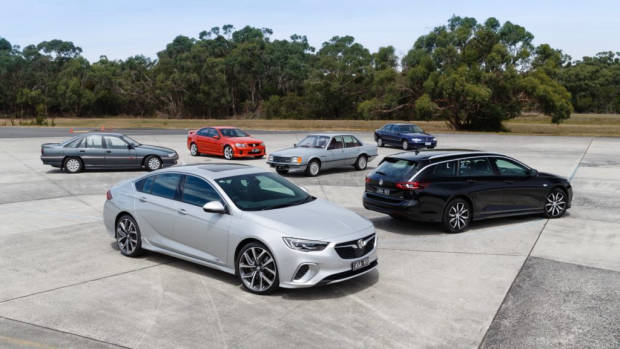
Four Australian-made all-new Commodore generations, VB, VL, VN, and VE, and the new ZB Commodore.
Most people who’ve contributed to the ZB Commodore debate on Chasing Cars seem to begrudgingly accept that local production simply couldn’t continue in a small market like Australia – but the real beef now is whether the new car deserves to bear the Commodore name. Many people have shared the view that it ought to have been called the Holden Insignia, a badge that did appear here in the Holden range, alongside the VF Commodore. However, the question of whether the ZB is a true Commodore seems, to us, to be beyond rational discussion. The feelings around the departure of a towering Australian icon – even if far too few people actually bought into that icon towards the end, hastening its fall – seem to preclude most people from appreciating a balanced view.
And that’s why we’re choosing to acknowledge the naming debate and not participate further in it. As editor, I’m too young to have been brought up in a Commodore generation, and in all honesty, I don’t have a bleeding heart for the end of Australian car manufacturing. But I respect many people held the Aussie Commodore very dearly and for them, seeing the badge replicated on an import – and a German, front-drive import at that – feels like a slight.
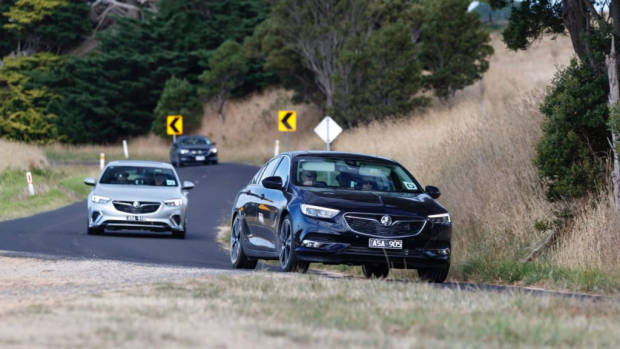
Instead, our coverage of the Commodore does not dwell on subjective debates, and instead treats the ZB as a new entrant to the midsize segment, competing with vehicles like the Subaru Outback, Volkswagen Passat, Mazda 6, and Skoda Superb. The new Commodore is European in form and function, and is offered in three body styles: a five-door liftback that replaces the conventional sedan; a traditional station wagon; and a new, Outback-like raised wagon form called the Commodore Tourer.
Three engines feature, in the form of a 191kW/350Nm 2.0-litre turbo petrol four-cylinder, a 125kW/400Nm 2.0-litre turbo diesel four-cylinder, and a 235kW/381Nm 3.6-litre naturally aspirated petrol V6. The liftback and wagon are available with all three engines, while the raised Tourer wagon is, oddly, petrol V6 only. The lack of a four-cylinder Tourer is one of the few questionable gaps in an otherwise plentiful – and somewhat complicated – Commodore lineup. The petrols have a nine-speed automatic; the diesel an eight-speed. Both gearboxes use conventional torque converters rather than dual-clutch setups.
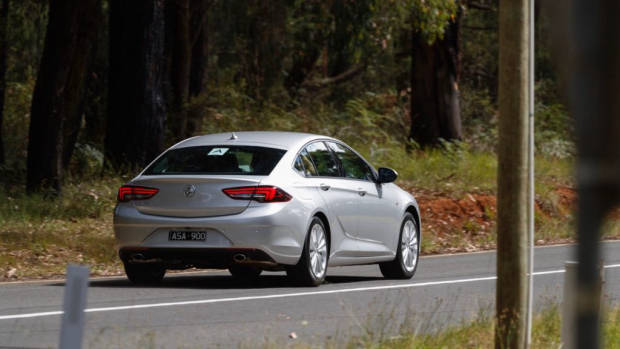
The new Commodore (along with its Opel Insignia and Buick Regal siblings) sits on General Motors’ Epsilon II front-wheel-drive platform, and the four-cylinder versions of the Commodore are front-drive only. However, a V6 is available or standard on many variants across the range, and a sophisticated all-wheel-drive system dubbed Twinster is fitted to all Commodores with a V6 engine. However, Australia is the only market for this car where AWD is V6-only, and we’re a little curious as to why. The decision to build the Commodore Tourer only as a V6 AWD vehicle is especially perplexing.
In the United States, the Buick version of the Commodore Tourer is only available with the 191kW/350Nm four, with AWD. And in Europe, the Opel version can be had with all-wheel-drive and a 154kW/480Nm twin-turbo diesel four. Either four-cylinder AWD setup would be more appropriate here for the Commodore Tourer: Subaru’s six-cylinder Outback 3.6R sells at a trickle compared to the petrol and diesel four-cylinders. A four-cylinder Commodore Tourer would have made it more competitive, too. At $45,990, the Calais Tourer looks too expensive next to a $42,640 Subaru Outback Premium 2.5-litre. Furthermore, few people really need AWD with this kind of car. We wonder why a front-drive Tourer wasn’t on the cards.
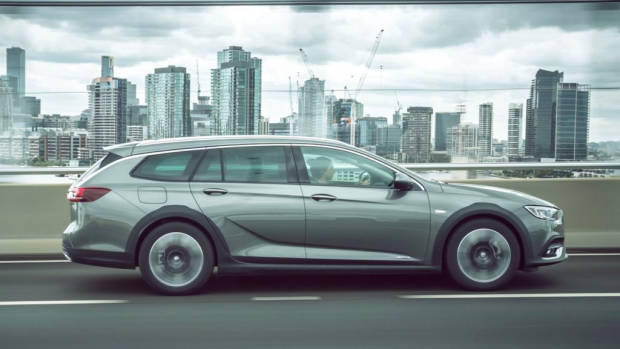
Why do we care so much for the Tourer? Because it’s the ZB Commodore variant with the greatest potential (and it’s also the best to drive, as you’ll read below). Subaru are the most successful game in town in midsize, non-SUV family cars: they sold more than 11,000 Outbacks here last year: an amazing performance for what is essentially a station wagon. The Commodore liftback and conventional wagon, meanwhile, will compete against lower-volume cars like the Mazda 6 (3,647 units) and Volkswagen Passat (2,463 units). Sure, they’ll eat a little into the fleet-driven sales of the Toyota Camry (23,620 units), but the Tourer is the best fit in the Commodore range for private buyers.
So we wouldn’t be surprised if we see some changes to the engine lineup in future. But for now, the three engines are lifted straight out of the General Motors parts catalogue – the two petrols are built in the US, while the diesel is German-made – but essentially every other element of the Commodore’s dynamics have been attuned for Australian conditions by Holden engineers.
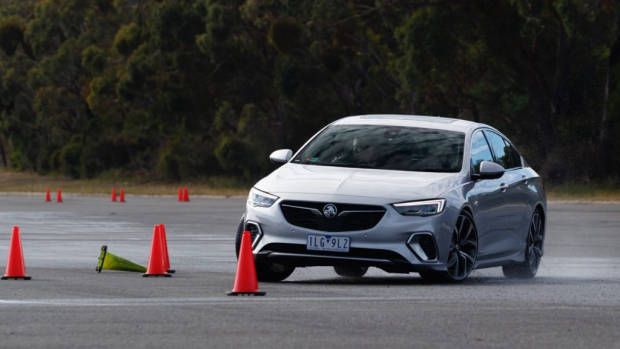
But first, a word on engine performance. Many will regard a four-cylinder Commodore with suspicion, but the 191kW/350Nm turbo petrol is actually the best engine of this trio. This two-litre felt quick enough in the 1567kg Equinox; the front-drive Commodore weighs 90kg less, so it understandably feels positively nippy. The plentiful torque arrives early in the rev range thanks to the turbo, meaning it takes little effort to motivate the four-cylinder Commodore. Its claimed economy of 7.4L/100km on paper looks a little average, but we’ll have to assess this with real-world testing later on.
We didn’t drive the diesel, but early reports are that the 400Nm on tap makes for a relaxed cruiser. But many enthusiasts will cast an eye straight to the 235kW/381Nm V6, which is a reworked version of the 3.6-litre unit previously made at Fisherman’s Bend, Victoria. The orientation of the engine has been flipped from longitudinal to transverse highlighting the bias to the front wheels, but there is no purely FWD V6; all of them have AWD in a system that uses two clutch packs – rather than a conventional rear differential – to direct up to 50% of torque to the rear axle, where 100% of that quantity can be sent to either rear wheel essentially instantaneously.
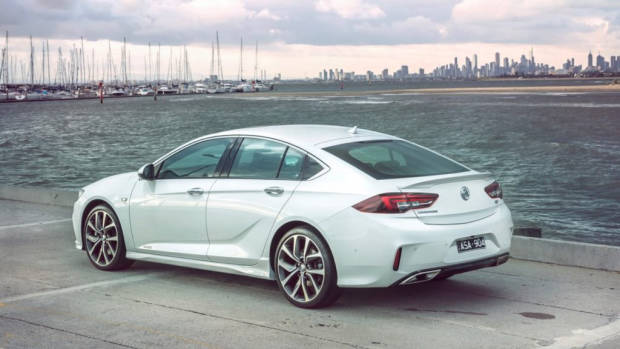
In the outgoing VF, the 3.6-litre V6 wasn’t much to write home about, but Holden have spent time refining the engine note. It now sounds really sonorous and interesting – but there’s little hiding the fact that it just isn’t very fast in a straight line, especially with the memory of the VF’s monstrous 6.2-litre V8 SS model looming large. In the $55,990 VXR, billed as the performance version of the ZB Commodore, the ~6.5 second 0-100km/h run feels a little slow in the era of sub-5 second Volkswagen Golf Rs for similar cash. With nine gears to work with but ultimately a deficit of torque, the V6 needs to be worked pretty hard to keep it on the boil. For most people, the sea of easy torque in either turbo four-cylinder will be preferable.
It’s said that Holden’s initial preference for a flagship engine in the ZB Commodore was a three-litre twin-turbo six. It’s a shame this aspiration didn’t bear out in the production version of the car. With a fundamentally good chassis, there’s plenty of potential for a faster, creamier six in this car, especially given GM’s new performance option – the Camaro, converted by Walkinshaw – will cost nearly $100,000.
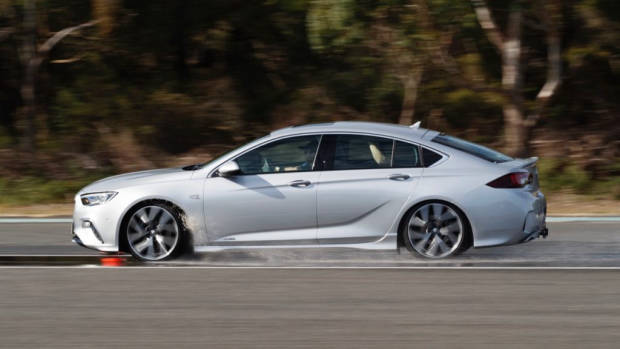
The ZB’s chassis is, indeed, a good one. Slightly lighter than VF, and more taut, the ZB feels rigid and tossable when driven hard. There is little flex or float, two characteristics that were occasionally evident in the VF. Instead, the new Commodore presents as as a tied-down vehicle with a heavy European accent, even if a back-to-back drive of the Australian tune, against Germany’s Insignia tune, revealed key differences in the two cars. A straight rebadge job this isn’t: the Holden Commodore has a far more settled suspension tune, with virtually none of the Insignia’s unsettling rebound characteristics – and lighter, more direct steering.
The steering weight was too light for our tastes in normal mode, though some of the models in the range feature a Sport button ahead of the automatic gear shifter which brings some weight back to the tiller. Why don’t all the cars have the Sport button? They should. Sport also engages a smarter tune on the automatic gearbox, which downshifts more intuitively under braking and holds gears through corners. Drive it smoothly for a while and it drops back to frugal Drive shift points, and awaits hard driving to revert back to Sport gear changes. Smart.
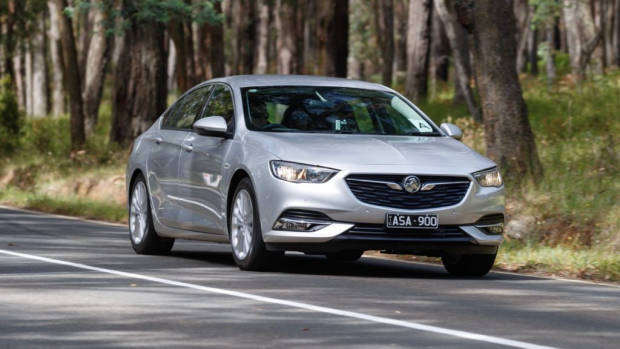
Very good tyres feature across the range – the Continental ContiSportContact 5 is the default, though the VXR wears quite-serious 245/35 Michelin Pilot Super Sports. We drove entirely in the dry, so there wasn’t much ability to gauge torque steer from the front-drive vehicles, though the grip on offer from AWD Commodores appears to be pretty immense. On the dirt handling track at Holden’s Lang Lang Proving Ground, the Tourer wagon was easy and intuitive to drive at the limit, traction control off, happy to gently kick the back out. On tarmac, inducing oversteer from the VXR or Calais-V was nearly impossible. Instead, it feels extremely planted, all the time.
Ride quality, though, is best described as firm. With two exceptions, there is none of VF’s fundamental plushness to be found in the way the ZB Commodore travels over tarmac. In particular, the chief luxury model – the V6 AWD-equipped Calais V liftback ($51,990) – runs on 20-inch wheels and fixed dampers and a terse ride is the near-inevitable result of that combination. Not very luxurious. With fixed dampers and smaller wheels, the other liftback and conventional wagon models do a better job of soaking up imperfections, but a Volkswagen Passat does a better job of blending good body control with occupant comfort.
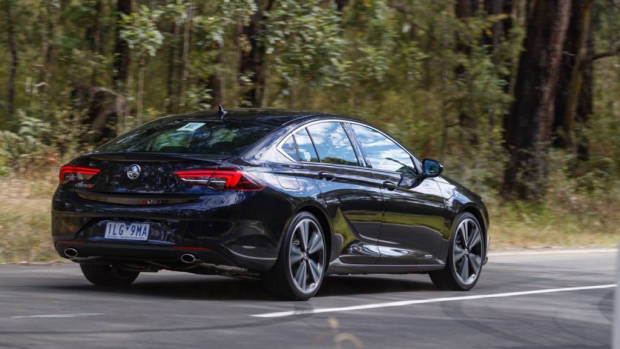
The Calais-V liftback, which rides on 20-inch wheels and fixed dampers, struggles to recreate trademark Calais plushness of old.
The two exceptions to the ride quality problem are the Tourer wagon and the VXR liftback. The Tourer has fixed dampers, but it rides on chunky, high-profile tyres and 18-inch wheels, which introduce something like last-generation Calais plushness back into the mix. And the VXR is the sole ZB model to have adaptive dampers. In the cushy Tour setting, the urban ride on the VXR’s 20-inch wheels is far better than the Calais-V liftback. We are perplexed as to why the Calais-V misses out on adaptive dampers, even as an option. It needs them.
Fifteen versions of the ZB Commodore are offered, starting with the $33,690 LT 2.0-litre petrol liftback and stretching to the $55,990 VXR 3.6-litre V6 liftback. Standard fitment on all cars includes autonomous emergency braking, lane keep assist, keyless entry and start, 8-way electric adjustment for the driver’s seat, auto headlights and wipers, dual zone climate control, smartphone projection, and remote engine start from the keyfob.
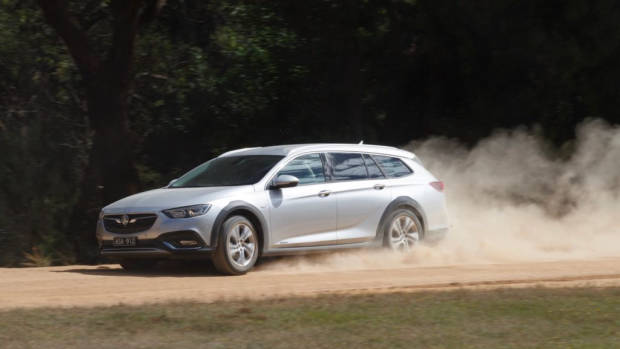
The Calais Tourer, with chunky tyres and smaller 18-inch wheels, is very comfortable, however.
However, there are a couple of value picks. The $40,990 Calais sticks with the turbo petrol but adds a number of desirable features – leather seats that are heated in the front, 18-inch wheels, the 8-inch screen with navigation, DAB radio, a colour display in the gauge cluster, blind spot monitoring, and rear cross-traffic alert. The $46,990 RS-V keeps all of that but adds the V6 and AWD, a sportier suspension, and a heads-up display to the mix. It’s just a shame these cars stick with underdone halogen headlights; matrix LED units come aboard higher up the range.
And call us indulgent, but the model we’d try and stretch for is the $53,990 Calais-V Tourer. It’s expensive, but it’s really where the Commodore puts its best foot forward, dynamically and in terms of fruit. On top of the aforementioned Calais, this version has the V6 and AWD, and adds ventilation to the heated front seats, massaging and memory for the driver, power adjustment for the passenger, heated rear seats, trick LED matrix headlights, a panoramic sunroof, Bose stereo, wireless phone charging, a kick-to-open powered tailgate, and adaptive cruise control – plenty of features you’ll pay more for, or are simply not available, on a Passat Alltrack.
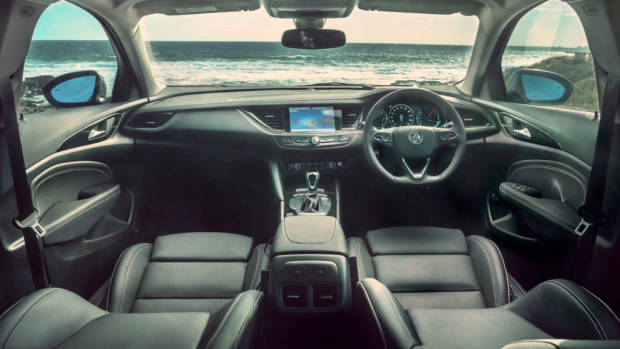
Design is, of course, subjective, but to us, the new Commodore is a fairly attractive car. In silver, liftback, VXR form, it’s subtle and premium to the eye, it a little generic at some angles. The Tourer model, with handsome plastic cladding and a long chrome bodyline extending into the taillights, one-ups both the Volkswagen Passat Alltrack and Subaru Outback in our perspective.
Inside, though, the new Commodore loses much of the character of the VF Commodore, which had a very attractive, feature-filled cabin. Interior quality wasn’t amazing on the VF, though, and the ZB immediately feels German, from the heavy doors, to the perfect tramline stitching – no wavy dashboard finishes like a number of our VF testers over the years. But the look inside the new ZB is very austere – even boring. It’s a very black affair, even in the luxurious Calais-V. Buick’s version of this car allows the choice of sand-coloured leather; Holden’s design director Richard Ferlazzo tells us that Australians simply don’t want anything but black.
The dashboard design is broad, incorporating GM’s matte 7-inch or glass 8-inch touchscreens, all of which integrate Apple CarPlay and Android Auto. However, it’s only the larger screen that offers integrated satellite navigation and generally nicer graphics. Some models score a colour heads-up display that projects speed and other information into the driver’s line of sight. The Calais-V and VXR further integrate a partial digital driver’s display into the gauge cluster, though it isn’t as sophisticated as Volkswagen’s Active Info Display, found in the Passat 206TSI, a key rival.
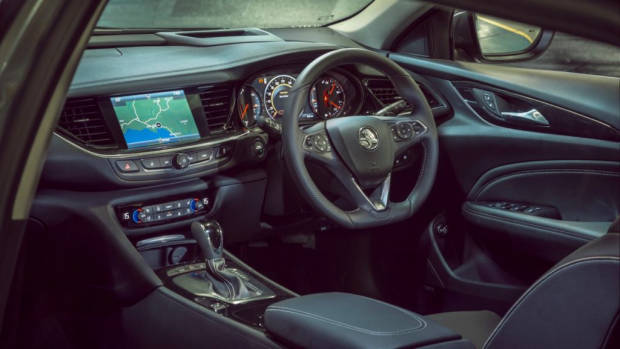
The steering wheel is finally a little smaller, though, and in many models is attractively perforated and feels expensive in the hand. Most materials inside are soft touch, though not where the driver’s leg rests, and the leather seats feel pretty good, especially in the VXR. The Calais-V and VXR have massaging seats with adjustable side bolsters officially endorsed by Aktion Gesunder Rücken, the German standard for quality ergonomics. And, indeed, they’re particularly supportive and comfortable over a few hundred kilometres of driving.
Narrower than the VF by 35mm, the ZB does feel a little more compact, with driver and passenger sitting noticeably closer together. However, the transmission tunnel is far less fat as it doesn’t need to support RWD and a beefy manual gearbox, so fitting three people side-by-side in the rear seat is actually easier. Plus, Holden got their way with Opel in insisting that the distance between the front and rear seated passengers remained identical to the VF, so legroom is not a problem in any new Commodore. But headroom is, in the liftback. Six-footers will find that their head touches the roof if they sit up straight. However, the wagon and Tourer are much taller in the rear, so the headroom problem disappears in those cars.
A liftback makes boot space far more accessible than a sedan, thanks to its large hatchback – so the ZB liftback’s 490 litre capacity (down 5 litres on the VF sedan) is now far more accessible and useful. Plus, the back seats now fold – they didn’t on a four-door VF – creating 1,450 litres of very long space. However, the new wagons see their capacities reduced on the old cars: 560 litres (compared to 895) with the seats up, and 1,665 litres (compared to 2,000) with the seats folded flat. But it’s now a smarter boot, with the typical European inclusions of shopping bag hooks, a light, and one-touch folding of the rear seats.
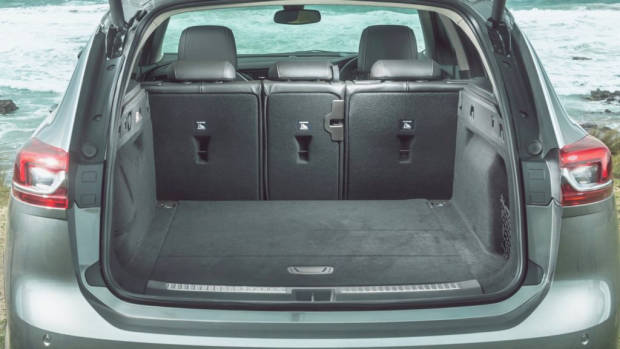
All in all, then, the ZB Commodore is an entirely different beast to the vehicle that wore this badge beforehand. Viewed objectively, and without holding the history of the Australian-made vehicle over the head of the new car, this isn’t necessarily a bad thing. We buy the view expressed by some Holden executives that the ZB is a vision of how non-SUV family motoring has to ‘change with the Australian landscape’. We do not, however, buy the view of most Holden executives that there is a clear link between the ZB and the Australian cars it follows. It isn’t, and that’s fine. Big, comfortable, rear-drive motoring was unique and enjoyable, but sadly, in a globalised world it was just not a format enough people wanted to buy anymore. However, though midsize vehicles outsold the old Commodore’s large format segment, the new shape remains a shrinking breed of car in the face of the SUV onslaught.
Instead, the ZB is a fairly dynamic, well-equipped and comfortable entrant to what we’ll call the semi-premium segment of the midsize market. Cars like the Mazda 6, Volkswagen Passat and Skoda Superb sit here, as does the very successful Subaru Outback, which the new Commodore Tourer squares up against. Sure, there are some specification issues – most glaringly the lack of a four-cylinder Tourer to really stick it to Subaru. That can be rectified as there are solutions available elsewhere in the world. The lack of a faster engine for the VXR is a bigger issue that does not have a clear solution.
However, we’re confident to call it: the ZB Commodore may be very different, but here we’ve got a better-built, more relevant vehicle. We like the new Commodore, especially in Tourer form. But we’re less sure of whether this likeable German car can shake off the brutally heavy shackles of this badge’s legacy. Holden need people to be willing to try it, and overcoming the evident vitriol in the community will be a difficult task. However, if you’re in the midsize market, we recommend ignoring that chatter, and at least trying the car for yourself. It’s not bad: it isn’t bad at all.

The Calais-V Tourer pulling a 2100kg load – the V6’s maximum towing capacity.
Key specs (as tested)
About Chasing cars
Chasing Cars reviews are 100% independent.
Because we are powered by Budget Direct Insurance, we don’t receive advertising or sales revenue from car manufacturers.
We’re truly independent – giving you Australia’s best car reviews.
The estimate provided does not take into account your personal circumstances but is intended to give a general indication of the cost of insurance, in order to obtain a complete quote, please visit www.budgetdirect.com.au. Estimate includes 15%^ online discount.
^Conditions Apply
Budget Direct Insurance arranged by Auto & General Services Pty Ltd ACN 003 617 909(AGS) AFSL 241 411, for and on behalf of the insurer, Auto & General Insurance Company Limited(ABN 42 111 586 353, AFSL 285 571).Because we don’t know your financial needs, we can’t advise you if this insurance will suit you. You should consider your needs and the Product Disclosure Statement before making a decision to buy insurance. Terms and conditions apply.
Indicative quote based on assumptions including postcode , 40 year old male with no offences, licence suspensions or claims in the last 5 years, a NCD Rating 1 and no younger drivers listed. White car, driven up to 10,000kms a year, unfinanced, with no modifications, factory options and/or non-standard accessories, private use only and garaged at night.
^Online Discounts Terms & Conditions
1. Discounts apply to the premium paid for a new Budget Direct Gold Comprehensive Car Insurance, Third Party Property Only or Third Party Property, Fire & Theft Insurance policy initiated online on or after 29 March 2017. Discounts do not apply to optional Roadside Assistance.
2. Discounts do not apply to any renewal offer of insurance.
3. Discounts only apply to the insurance portion of the premium. Discounts are applied before government charges, taxes, levies and fees, including instalment processing fees (as applicable). The full extent of discounts may therefore be impacted.
4. We reserve the right to change the offer without notice.